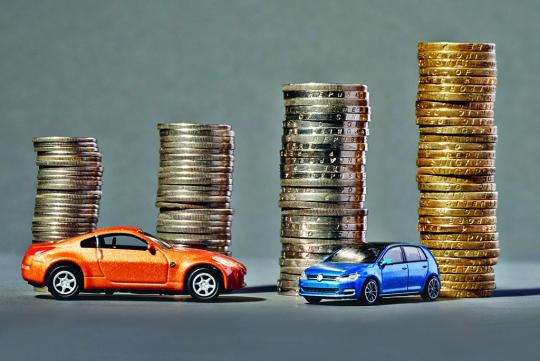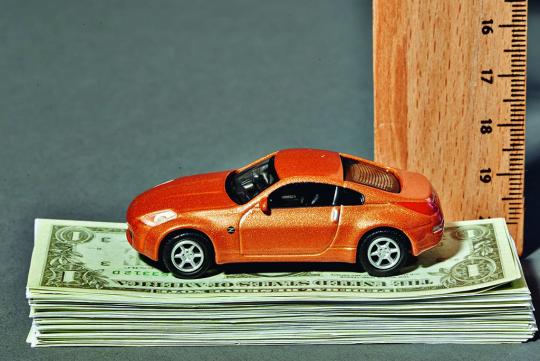Towards fairer car taxation
Towards fairer car taxation

 Judging from public reaction to the drastic twin measures announced in February to cool the car market, people arent happy. It is ironic, though, since at least one move which limits the motor loan quantum to 50 per cent (or 60 per cent if the cars OMV is $20,000 or less) and halves the maximum loan tenure from 10 years to five had been suggested by many consumers in the past several months. Their reasoning: it would cool overheated COE prices.
Judging from public reaction to the drastic twin measures announced in February to cool the car market, people arent happy. It is ironic, though, since at least one move which limits the motor loan quantum to 50 per cent (or 60 per cent if the cars OMV is $20,000 or less) and halves the maximum loan tenure from 10 years to five had been suggested by many consumers in the past several months. Their reasoning: it would cool overheated COE prices.
This is history repeating itself. When the Government first introduced measures to curb car loans back in 1995, it was on the back of persistent calls by the public (COE prices had breached $100,000 just weeks earlier). But when the curbs were implemented, people were unhappy.
History has also shown that loan restrictions can be overcome. Before the first set of loan curbs were lifted in 2003, financial institutions and car firms were already bypassing the restrictions, and attempts by the authorities to put a stop to schemes such as balloon payment and overtrade were largely unsuccessful.
 In any case, the government decided to deregulate the car loans market in 2003, only to reintroduce it two months ago (February) in a more severe form.
In any case, the government decided to deregulate the car loans market in 2003, only to reintroduce it two months ago (February) in a more severe form.
This loan restriction accompanies a tiered ARF (Additional Registration Fee) scheme that places higher taxes on higher-end cars. While this measure will put some downward pressure on COE prices, it has a Robin Hood element it makes the rich pay more, and few folks will argue against that principle.
But heres the thing. The tiered ARF scheme which levies a 100 per cent tax on the fi rst $20,000 of a cars OMV (open market value), 140 per cent on the next $30,000 band and 180 per cent on values above $50,000 works best when OMVs are correct.
Many OMVs do not seem correct. In the 1990s and 2000s, the authorities moved swiftly to tackle tax cheats who underdeclared their OMVs. A string of motor traders were fi ned or jailed. Of late, however, those taken to task over OMVs have been relatively small players, mainly parallel importers. Does this mean the playing fi eld is largely even?
 It is doubtful. The OMVs of some new cars are inordinately low when compared to similar (or even inferior) rivals, while others have fallen inexplicably when a manufacturer assumes an importers role.
It is doubtful. The OMVs of some new cars are inordinately low when compared to similar (or even inferior) rivals, while others have fallen inexplicably when a manufacturer assumes an importers role.
A car with a lower OMV offers its seller a distinct advantage, simply because car taxes are based on OMVs. A model with a lower OMV allows the seller to price it more competitively than its rivals. It also offers the seller a fatter profit margin, allowing him more muscle to outbid others for the all-important COE (certificate of entitlement).
Now, with the tiered ARF scheme, the advantage of a lower OMV is amplified. For instance, the OMV of a certain popular German luxury saloon is around $49,800, while that of its close competitor is $52,200. Under the tiered scheme, the former will incur $8,500 more in ARF, while the latter will incur $13,750 more. The difference between the pair is thus $5,250 under the new tiered scheme more than double the gap in the previous flat ARF regime. In absolute terms, this gap can get frighteningly wide as you rise up the automotive totem pole in Singapore.
 If the authorities do not act with speed and fervour, the wide gaps in ARF between cars might erode the social equity which the tiered ARF scheme aims to re-establish. As is, the tiered ARF scheme is already expected to be fairer when it comes to bidding for a COE. The additional cost that a premium model incurs in the way of ARF should help level the playing field for such a car and a budget model in the same COE category.
If the authorities do not act with speed and fervour, the wide gaps in ARF between cars might erode the social equity which the tiered ARF scheme aims to re-establish. As is, the tiered ARF scheme is already expected to be fairer when it comes to bidding for a COE. The additional cost that a premium model incurs in the way of ARF should help level the playing field for such a car and a budget model in the same COE category.
In recent years, theres been hardly any contest between cars like the 1.6-litre Mercedes-Benz C180 and the 1.6-litre Toyota Corolla Altis, which explains why the German make, along with its arch-rival BMW, have been dominating the top spots on the local sales charts.
What will level the playing field further would be a revamp of the COE categories to align them with the tiered ARF bands
This article was written by Christopher Tan, consulting editor for Torque.


1 Comment
Recommended Comments
Create an account or sign in to comment
You need to be a member in order to leave a comment
Create an account
Sign up for a new account in our community. It's easy!
Register a new accountSign in
Already have an account? Sign in here.
Sign In Now